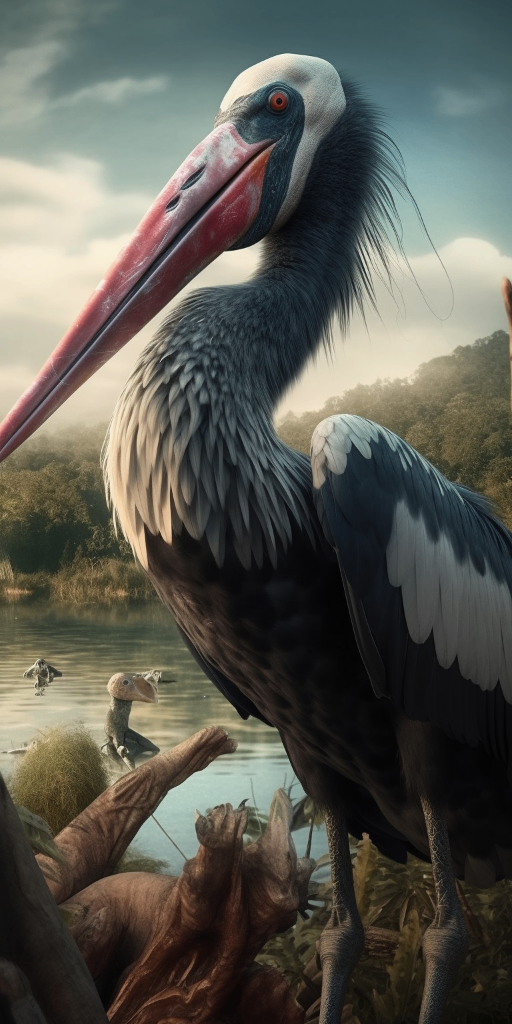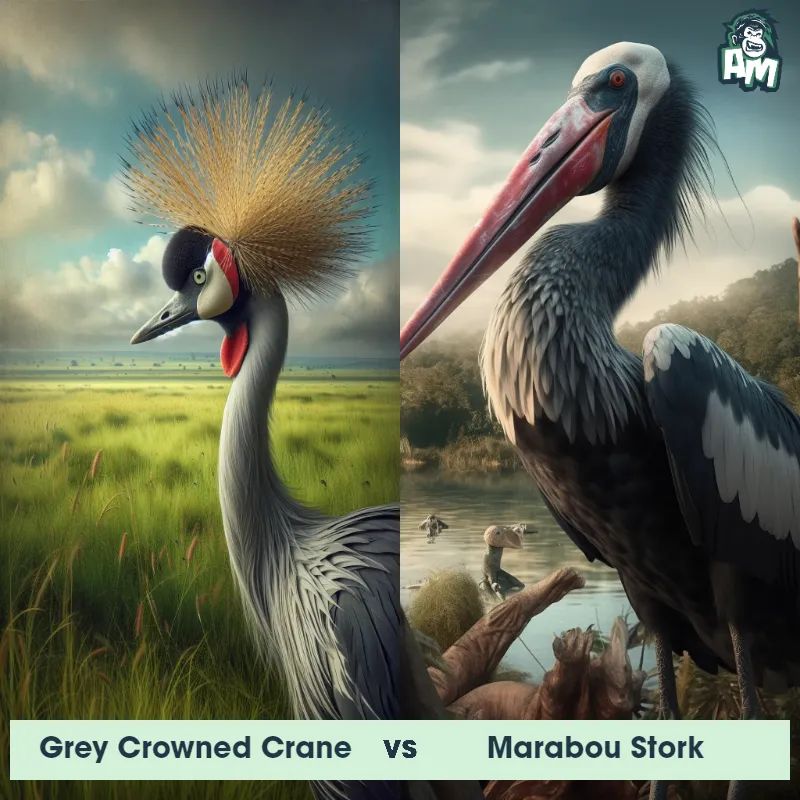The Marabou Stork
The Marabou Stork, also known as the African Marabou, is a large bird species found in sub-Saharan Africa. With a wingspan of up to 3.2 meters 10.5 feet and a height of about 1.5 meters 4.9 feet, it is one of the largest species of storks in the world.

| Marabou Stork | |
|---|---|
| Size | Up to 1.5 meters (4.9 feet) tall, (metric: 150 centimeters) |
| Weight | Up to 9 kilograms (20 pounds), (metric: 9,000 grams) |
| Speed | Speed: 30 mph (48 km/hr) |
| Key Strength | Powerful beak and wings |
| Biggest Weakness | Slow movement on the ground |
| Scientific Name | Leptoptilos crumeniferus |
| Family | Ciconiidae |
| Habitat | Wetlands, savannas, and grasslands |
| Geography | Sub-Saharan Africa |
| Diet | Scavenger, eats carrion, fish, and small mammals |
| Lifespan | 23 years - 25 years |

The Marabou Stork
The Marabou Stork, also known as the African Marabou, is a large bird species found in sub-Saharan Africa. With a wingspan of up to 3.2 meters 10.5 feet and a height of about 1.5 meters 4.9 feet, it is one of the largest species of storks in the world.
Fun Fact: The Marabou Stork has exceptionally strong and powerful bill with sharp edges, which it uses to tear apart its food, no matter how tough or rotten it may be.
| Marabou Stork | |
|---|---|
| Size | Up to 1.5 meters (4.9 feet) tall, (metric: 150 centimeters) |
| Weight | Up to 9 kilograms (20 pounds), (metric: 9,000 grams) |
| Speed | Speed: 30 mph (48 km/hr) |
| Key Strength | Powerful beak and wings |
| Biggest Weakness | Slow movement on the ground |
| Scientific Name | Leptoptilos crumeniferus |
| Family | Ciconiidae |
| Habitat | Wetlands, savannas, and grasslands |
| Geography | Sub-Saharan Africa |
| Diet | Scavenger, eats carrion, fish, and small mammals |
| Lifespan | 23 years - 25 years |
Marabou Stork Matchups
We use AI to simulate matchups between the Marabou Stork and other animals. Our simulation considers size, strength, and natural predatory behaviors to determine the most likely outcome.

Can't find the Matchup you want?
Create Your Own MatchupMarabou Stork: Diet, Predators, Aggression, and Defensive Behaviors
What do Marabou Storks eat?
Marabou Storks are scavengers and primarily feed on carrion, which includes dead animals. Marabou Stork are often seen scavenging at garbage dumps and near slaughterhouses. In addition to carrion, Marabou Stork also consume fish, insects, frogs, and small mammals.
Do Marabou Storks have any predators?
While Marabou Storks are large birds with few natural predators due to their size, Marabou Stork may still fall prey to animals such as large carnivores like lions and hyenas. Young or injured Marabou Storks are more vulnerable to predation.
Are Marabou Storks aggressive?
Marabou Storks are not typically aggressive towards humans or other animals unless provoked or threatened. Marabou Stork are known to be quite tolerant of other storks and can even nest in large colonies without much conflict.
Do Marabou Storks fight amongst themselves?
Marabou Storks are known to engage in aggressive behaviors towards each other, especially during feeding. Marabou Stork may compete for food and exhibit aggressive displays such as bill clattering, neck stretching, and posturing. These interactions can sometimes escalate into physical fights.
How do Marabou Storks defend themselves?
Marabou Storks do not have many defensive mechanisms as Marabou Stork are not built for swift aerial escapes or camouflaging themselves. However, Marabou Stork may use their large size and bill to deter potential threats. Marabou Stork may also engage in vocalizations and aggressive posturing to ward off predators or competitors.
What is the biggest weakness of a Marabou Stork in a fight?
Despite their large size and intimidating appearance, Marabou Storks are not particularly agile or quick compared to other birds. This lack of agility could be a weakness in a physical confrontation, as Marabou Stork may find it difficult to evade attacks from smaller, more nimble predators or competitors.
Fun Fact: Marabou Storks have been observed using their wings to create shade while hunting. They position their wings above their prey to block out the sunlight, making it easier to spot their target.
Fun Fact: Marabou Storks engage in communal nesting, with hundreds or even thousands of birds gathering together to breed in colonies. These colonies can often be found in trees near water sources, where they construct large nests made of sticks and vegetation.













